#16 May 2008
Explore tagged Tumblr posts
Text






























Robert Gerald Mondavi died on May 16, 2008.
#Welcoming Muse by John Henry Waddell#Robert Mondavi Bust By Len Urso#Robert Gerald Mondavi#died#death#16 May 2008#anniversary#US history#tourist attraction#landmark#USA#Oakville#Napa Valley#summer 2019#2017#original photography#travel#outdoors#architecture#cityscape#flora#wine tasting#don't drink and drive#St. Francis of Assisi by Beniamino Bufano#Cliff May#vineyard#West Coast#vacation
1 note
·
View note
Text








“I got the word that I booked Beckett on May 4, 2008. That was the beginning of what ended up being a life-changing experience.” ✨️
Stana Katic ❤️
#castle#kate beckett#katherine houghton beckett#katherine beckett#detective beckett#captain beckett#stana katic#castle series#castle edit#castle rewatch#16 years of Kate Beckett#May 4 2008#May 4 2024
70 notes
·
View notes
Text

ASOIAF Doodles by Kat W.
#valyrianscrolls#cersei lannister#jaime lannister#daenerys targaryen#jon snow#a song of ice and fire#asoiaf#asoiaf art#date of publication: May 16 2008
55 notes
·
View notes
Text
Bestie I have got to tell you Mal TD totally listens to the Shadow the Hedgehog OST, and depending on the Total Drama timeline it would literally be perfect timing like- you can’t tell me this edgy teen nerd didn’t see a Sonic character with a gun and DIDN’T think it was cool, come on!
#mal td#td mal#total drama#canon mal may not seem the type but we all agree that canon mal was bad(ly written)#make him an edgy teen that may or may not have engaged in teenage delinquency that may or may not have gotten juvie time#previous juvie attendee duncan certainly wasn’t supervillain even if he’s not nice#give mal some teenage cringe to revel in like come on#shadow the hedgehog came out in 2005 (good for him) and apparently the first show was canonically set or at least filmed in 2007#tdi and tda take place vaguely one after the other so that’s within the same year#tdwt come a year later making the gen 1 cast probably between 16-17 now m#tdroti comes out during the candian summer later in the year fit for island weather aka in 2008 tdroti cast are 15-16#gen 1 and sierra are maybe 16-17 gen 2 and alejndro are maybe 15-16#mike and maybe mal given teen awkwardness/angst respectively are probably also 15-16#2008 for 15-16y/o = 1993 or 1992 aka 12-13y/o during 2005#baby- between duncan escaping juvie during his audition tape and the 3 year gap of mal being juvie free#there’s more than enough time for an esgy teen to get their shadow the hedgehog on#did i just spend the entire tags rambling about a timeline? maybe#i just want mal to have ‘being a kid’ moments okay 😩?
32 notes
·
View notes
Text

#Newly emerged Four-Spotted Chaser#libellula quadrimaculata Canon 400D EF 100 2.8 f/4.5 1/40 iso: 200 Prague#CZE May 16#2008#dragonflies#odonata#insects#insectphotography#macro
0 notes
Text
MCU Timeline: Avengers: Age of Ultron
19th century - Black Panther kills Ulysses Klaue's great-grandfather during his attempt to annex Wakanda.

1990s - Wanda and Pietro Maximoff are born (12 minutes apart).
Between 1992 and 2008 - Tony meets Ulysses Klaue at an arms convention, before Klaue got his tattoos and branding.
~2000 - the Maximoff twins become orphans. They remain trapped with the unexploded shell for 2 days.


May 4/5, 2012 - STRIKE hands the Scepter over to Dr. List.
Early 2014 - Maximoffs volunteer for Hydra's experiments and become mutants.
Spring 2014 - Spring 2015:
The Avengers become Tony's private paramilitary organization under Cap's command.
The team moves in the Avengers Tower.
September/October 2014 - Clint is on vacation.
Tony creates the Iron Legion.
Tony and Bruce create Veronica and Hulkbuster.
The Avengers raid Hydra bases in search of the Scepter.

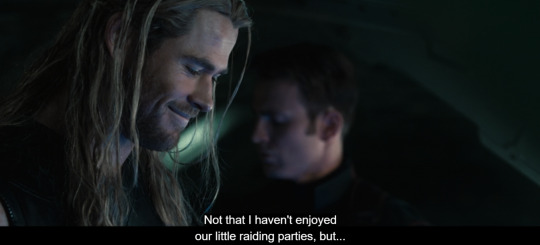
The main events take place in early or mid-April 2015.
Day 1 (Thursday), April 2nd or 9th:
Afternoon in Sokovia - The Avengers attack the local Hydra base.

3 pm in NY (several hours later) - they return to Avengers Tower. Clint is being treated by Dr. Cho.

Evening - Tony convinces Bruce to use the Scepter to try to create a global peacekeeping AI, Ulton.
Day 1-3 (Thursday-Saturday), April 2-4 or 9-11 - Tony and Bruce work on Project Ultron.
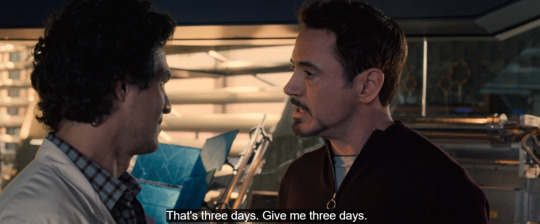
Day 3 (Saturday), April 4th or 11th:
Evening - the birth of Ultron.
The farewell party.

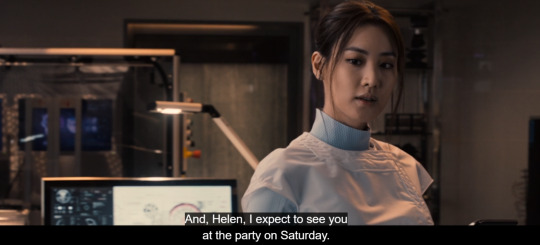
Night - Ultron's attack on Avengers Tower.
Day 4 (Sunday), April 5th or 12th:
Early morning in Sokovia - Ultron takes the Scepter, goes online, and, after connecting to Strucker's castle in Sokovia, begins creating a new body and many Ultron Juniors.
The Avengers discuss the situation.
Days 4-8, April 5-9 or 12-16:
Ultron builds his body.
Maximoff twins join him.
Ultron and the twins are emptying laboratories and weapon facilities.
Ultron tries to get his hands on the nuclear codes, but J.A.R.V.I.S. holds the line.
The Avengers try to find him and find out his plans.
Rhodey returns to his duties in the Air Force.
Thor tries to reach Heimdall, to no avail.
Ultron kills Strucker.
Day 8 (Thursday), April 9th or 16th:
3:30 - 5:40 pm - the Avengers learn of Strucker's death and finally track down Ultron, which leads them to Ulysses Klaue.

Note: It's always Thursday on computers in this movie. It's highly doubtful that this is true for all of them, and is most likely just a result of the laziness of whoever was in charge of the screens. I'll accept this as true for the first appearance only, since it also makes sense for the number of days that have passed.
Rhodey heads to the Middle East. Tony updates War Machine's encryption against Ultron's cyber attacks.
~Day 9 (Friday), April 10th or 17th:
Afternoon in South Africa - The Battle at the Salvage Yard.
Evening in Africa/Morning in the US - The Duel of Johannesburg.

Night in Africa/Day in the US - the team is on their way to Barton's farm.
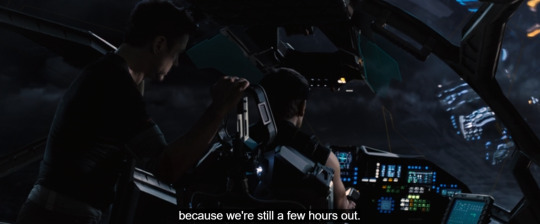
Afternoon - team arrives at Barton's farm. Thor departs to London. Fury sits in ambush in Clint's barn.
Evening - Bartons and Co are having dinner. Fury gives the Avengers a pep talk.
~Day 10 (Saturday), April 11th or 18th:
8 pm in Korea/6 am in the US - Ultron takes control of Helen Cho and her Cradle in Seoul.

6 am in the US - the Farmers Avengers split up: Tony heads to the Nexus facility in Oslo; Rogers, Barton, and Romanoff head to Seoul; Fury drops Banner off at the Tower, picks up Hill and Rhodes, and then goes to dust off the original Helicarrier.

Night in Korea/Morning in the US - Ultron and Doctor Cho work on Ultron's new vibranium-organic body.
Afternoon in Oslo/Morning in the US - Tony retrieves what's left of JARVIS from the net.
Afternoon in London/Morning in the US - at the University of London, Thor picks up Erik Selvig and takes him to the Water of Sight.
Afternoon in the US - Tony restores JARVIS.
Morning in Seoul/Evening in the US - Ultron begins uploading himself into the new body. The twins learn of his plan, remove his control from Dr. Cho, and escape.
The Battle of Seoul.
The twins join the Avengers. Ultron takes Natasha to his castle in Sokovia. Clint brings the Cradle to Tony and Bruce.
Night in NY - Natasha wakes up in the castle. Ultron creates a new body out of vibranium. Tony and Bruce work on Vision. Clint connects with Nat.

Note: on this computer screen it's Thursday (again) and 3:28 PM, which obviously doesn't match the time in the movie. It's night there, so we have to ignore this unreliable evidence for both the day of the week and the time.
The birth of Vision.

The Avengers prepare to battle Ultron. Tony chooses FRIDAY as his new main AI.
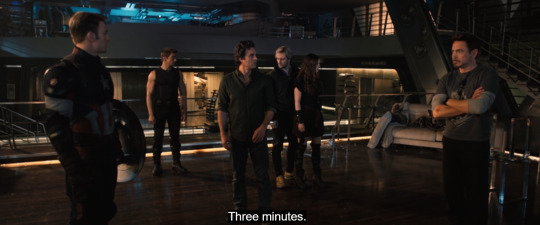
~Day 11 (Sunday), April 12th or 19th:
6 am (local) - the Avengers arrive in Sokovia and evacuate the city.
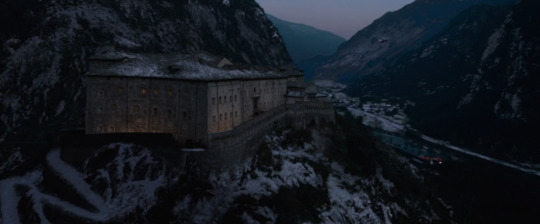
7 am - the Battle of Sokovia.
Tony and Thor save Earth from the artificial meteorite. Pietro dies saving Clint. Vision kills Ultron. Hulk takes the Quinjet and leaves the planet.

Evening in the US - Clint comes home.
April - September 2015:
Barton retires.
Tony builds a new Avengers Compound in upstate New York.
~June 2015 - Nathaniel Pietro Barton is born.

Note: babies usually start giggling around 4 months of age. At the time of the main events, he was about 2 months away from being born, then add about 4 months to that Compound scene.
September 2015:
The new team has been assembled, now including Wanda, Rhodey, Sam and Vision.
Fury, Hill, Cho and Selvig work at the Avengers Compound.
After making sure that the team is assembled, the Compound is built and everything is ok, Tony tries to retire. Again.
Thor goes to investigate the situation with the Infinity Stones.

Note: I take it the makeup artists thought this scene took place right after the Battle of Sokovia? That's why Thor still has scratches on his face. But as practice shows, children are not born and do not grow up so quickly (see the previous note), so we will have to accept the fact that Thor has already managed to fight with someone again.
Forever - Clint Barton lives.

MCU Phase One Timelines Iron Man 3 Timeline Thor: The Dark World Timeline CA:TWS Timeline GotG Timeline
#marvel#mcu#tony stark#iron man#avengers#avengers age of ultron#steve rogers#captain america#mcu timeline#clint barton#hawkeye#natasha romanoff#black widow#thor#hulk#bruce banner#wanda maximoff#pietro maximoff#ultron
84 notes
·
View notes
Text
Canada, Truth & Reconciliation, & Indigenous Games
Hello friends,
Today (September 30th) is the National Day of Truth & Reconciliation in Canada. It is a very recent holiday in this country, and it’s also very important to me. I want to spend some time today telling you about it, and then (since this is a ttrpg blog) directing you to some indigenous storytellers and designers that deserve a spotlight for various reasons.
I am not Indigenous. This information is a collection of knowledge that I have gained through university coursework, personal research I've undertaken, and relationships I've cultivated with indigenous friends who have taken pains to educate me and highlight how these issues have personally affected them. I am aware that the summary I'm providing is incomplete, and there may be elements that I don't fully understand the implications of.
If you are Indigenous, please keep in mind that this post may recall some painful and personal moments of history for you. Proceed with caution. The shout-outs to indigenous creators can be found after the heading “The Storytellers.”
The Truth.
Canada has been engaged in a cultural genocide of its indigenous peoples since European settlers started the colonization of the country. This genocide had many avenues, including the creation of the Indian Act, the relocation of many Indigenous peoples to restricted Reserves, and a disturbing trend of missing and murdered Indigenous women. For the purposes of today however, I’m going to stick to just talking about Residential Schools, and the impact they had on Indigenous families and their children.
Residential schools were designed to “kill the Indian” and “save the child”, in the words of John A Macdonald, the prime minister who authorized their creation. They were designed to sever Indigenous children from their culture and raise them in a Christian, colonial context. These residential schools were harsh, forbidding Indigenous children to speak their mother tongues, cutting their hair, and forcing them to learn skills considered “useful”, in the language of the colonizer, away from their parents. The schools were also hotbeds of abuse. Alarming numbers of children fell ill and died at these schools - the death toll to this day is unknown. From April 1, 1920 to some time in the 1990’s, residential school attendance was mandatory for Indigenous children from the ages of 7 to 16.
The Sixties’ Scoop is a reference to a mass kidnapping of Indigenous children in the 1950’s and 60’s, who were forcibly removed from their homes and “adopted” into non-Indigenous families. While the last residential school in Canada closed in 1997, Indigenous children still make up over 50% of all children in private foster care, despite only accounting for just over 7% of all children under age 15 in Canada.
The Reconciliation.
Reconciliation is a goal prompted by Indigenous groups and elders. It is a choice that promotes "balance and harmony," a way of life that encourages coexistence, according to the words of one residential school survivor, Hereditary Chief, Dr. Robert Joseph.
In 2007, The Indian Residential Schools Settlement came into effect, offering compensation to survivors of many residential schools.
In 2008, the Truth and Reconciliation Commission of Canada was officially launched, intended to be a guide for the Canadian government to help establish lasting reconciliation. This commission was a way to formalize a method of collecting data, and it also had the responsibility of developing a list of recommendations for the country of Canada to follow, in the goal of pursuing a relationship between the Indigenous peoples of Canada and the government of Canada.
In 2007, Cindy Blackstock, a First Nations (Gitxsan) activist launched a court case against the Canadian government, for under-funding social services provided to children living on First Nations reservations. This was in regards to Jordan’s Principle, a child-first Canadian policy that is meant to ensure that First Nations children have equal access to all government funded public services as other Canadian children. The Truth and Reconciliation Commission made the respect of Jordan’s Principle one of its 94 Calls to Action for the Canadian government.
The Canadian Human Rights Tribunal became involved in 2016, when they found more alleged breaches of the Canadian Human Rights Act in regards to Jordan’s Principle. As of September this year, the Federal Government is still attempting to dismiss human rights complaints regarding the use (or, in fact, neglect) of Jordan’s Principle.
Canada’s history of residential schools and use of the foster care system has grievously wounded Indigenous families and children. The disruption of family life and the forcible removal of children from their culture has created legacies of loneliness, pain, and suicide. Indigenous people today can trace their own familial wounds to the legacy of residential schools and the lack of resources provided to them from the government. The National Day of Truth and Reconciliation is a day to remember this legacy and provide a space for education, but it isn’t enough.
You can learn more about this day and the history behind it by visiting the National Centre for Truth and Reconciliation Website.
You can also watch this 18-minute Youtube video about Residential Schools, or We Can’t Make the Same Mistake Twice, a free 2 & 1/2 hour documentary about Blackstock's continuous fight regarding caring for children using Jordan’s Principle.
I also recommend 21 Things You May Not Know About The Indian Act, by Mary-Ellen Kelm and Keith D. Smith, which breaks down some of the key elements of the Indian Act for everyday person.
So, how do we connect this to ttrpgs?
When it comes to the milestones that have been achieved in Canadian history, those milestones have been made because we listened to Indigenous voices. The recommendations made by the Truth and Reconciliation Commission that have been followed are having real and positive effects for Indigenous peoples in Canada. Listening to the stories of Residential School survivors has been integral to the processes recommended and undertaken by the Canadian government.
We need Indigenous stories. We need Indigenous storytellers.
The Storytellers
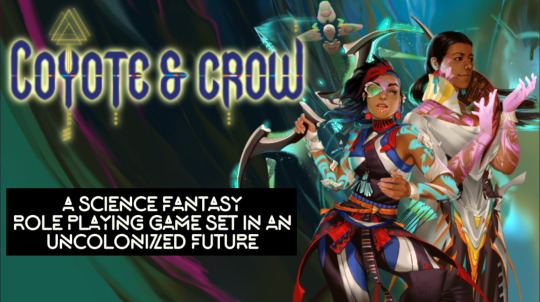

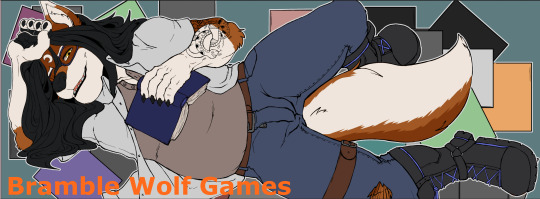
Coyote & Crow.
Coyote & Crow Games is a tabletop games publisher, primarily focused on the tabletop roleplaying game, Coyote & Crow. This is a world and game whose design team is fully Indigenous, from various First Nations people groups across North America. Coyote & Crow is a futuristic game about a land untouched by colonization, a land changed by a series of climate events that have changed the geographical and social landscape. It involves supernatural powers, a completely unique form of civil organization, and a unique d12 dice pool system
In a recent update, Connor Alexander, as the face of Coyote & Crow, announced some business decisions that include a creation of a consultant branch of the company, to provide professional consultation services for other creative endeavours that are looking to include Indigenous Representation in games.
What I love most about Coyote and Crow is that it’s a world where Indigenous creators have been given full reign over the ways they are represented in the fiction, and it provides a unique social and political imagining of society that pulls from many First Nations cultures. It’s refreshing, it’s exciting, and it provides a lot of guidance for non-Indigenous players so that they can engage with the world in a way that’s respectful.
Wendigo Workshop
This is a small team based in Quebec, Canada. I’m not entirely sure whether the team is fully Indigenous, but there are Indigenous creators as part of the team.
Currently the Workshop is working on a number of different games, including… Anomaly Hunters; a monster hunting ttrpg built on the Breathless SRD. Arkelon Chronicles; a science-fantasy ttrpg surrounding the discovery of an Alien ruin. Last Hope; a Caltrop Core game about magical girls fighting to protect the world while balancing their student lives.
Bramble Wolf Games
@sahonithereadwolf is an Indigenous creator based in Appalachia looking to make games that mean something. I found out about him through his game Exceptionals, a game about community, activism and kinetic eye beams. It’s inspired heavily by X-Men, but instead of telling superhero stories, it’s more about the fostering of a community outside of the systems created and enforced by colonial governments.
Sahoni is also currently working on a game called Protect the Sacred, a game inspired by Indiana Jones, but focused on the protection and preservation of monsters and artifacts in the interests of the cultures that have been stolen from by colonial powers. The game is about your relationship to your culture, and resistance to fascism - and you can get sneak peeks to this game through Sahoni’s Patreon.
Both Protect the Sacred and Exceptionals involve character creation that requires players to answer questions about who they are, what they do, and how they affect the community around them. They both recognize the community around you as integral to your success, and I think that this point of view is such an important concept to consider when using games as an art form that can expand your social imagination.
Also...
There is a consultancy service in Alberta, Canada called Pe Matawe Consulting, which is not focused specifically on ttrpgs, but does provide consulting for various creative endeavours. They provide consulting services as well as workshops, with the goal of providing a broader understanding of Indigenous culture and folklore.
162 notes
·
View notes
Text
On this Yom Ha'Zikaron Le'Chalalei Ma'rachot Yisrael (Memorial Day for Israel's Fallen Soldiers and Terror Victims), I figured it's important to remember that Israeli victims did not exist solely on Oct 7. We have lost loved ones before and since. Here's a list with just one random victim to represent each year. Please scroll down the list to see how far back it goes.
(part 1/5, all parts in the reblogs)
2024: On Jan 7, we lost 19 years old Shai Garmai
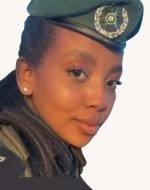
2023: On Oct 7, we lost 28 years old Osama abu Madiam
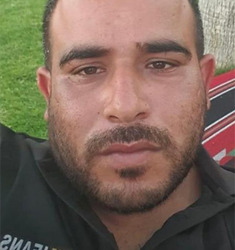
2022: On Nov 23, we lost 18 years old Tiran Faro
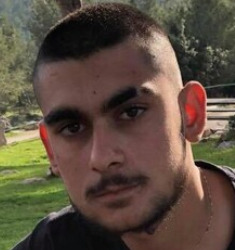
2021: On May 12, we lost 5 years old Ido Avigal
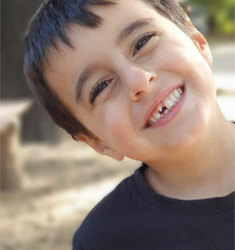
2020: On Aug 26, we lost 39 years old Shai Ochayon
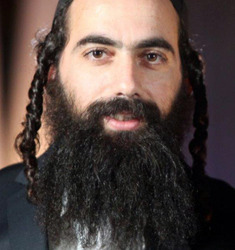
2019: On May 5, we lost 49 years old Zaid al-Chamamda
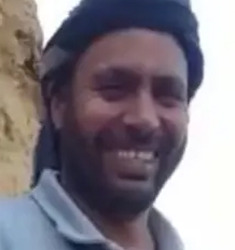
2018: On Dec 12, we lost Amiad Israel Yish Ran, who was murdered in his mother's womb
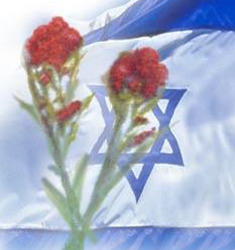
2017: On Nov 22, we lost 21 years old Hodaya Nechama Assoulin
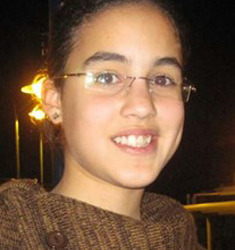
2016: On Oct 25, we lost 14 years old Rami Namer abu Amar
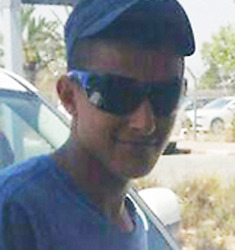
2015: On Feb 17, we lost 4 years old Adelle Biton
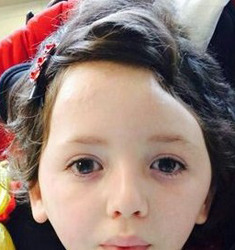
2014: On Oct 22, we lost 2.5 months old Chaya Zissel Brown
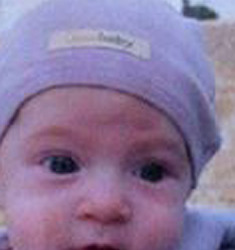
2013: On Dec 24, we lost 22 years old Salech al-Din abu al-Atayef
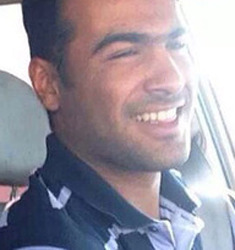
2012: On Jul 18, we lost 28 years old Yitzchak Idan Kolangi
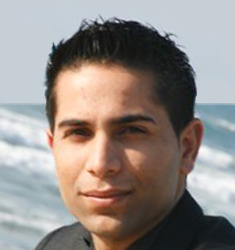
2011: On Apr 17, we lost 16 years old Daniel Aryeh Viplich
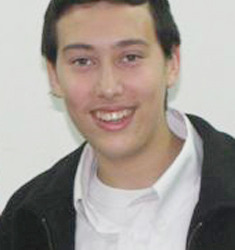
2010: On Feb 26, we lost 52 years old Netta Blatt Sorek
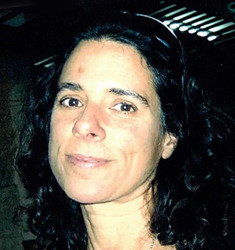
2009: On Apr 2, we lost 13 years old Shlomo Nativ
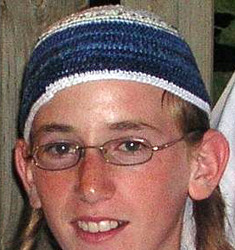
2008: On Mar 6, we lost 26 years old Doron Trunach Mahareta
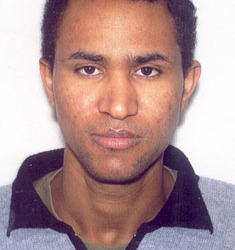
2007: On Jun 17, we lost 85 years old Meir Cohen
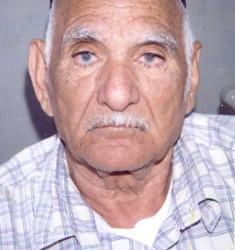
2006: On Aug 10, we lost 4 years old Fatchi Assdi

2005: On Jul 12, we lost 16 years old Nofar Horvitz
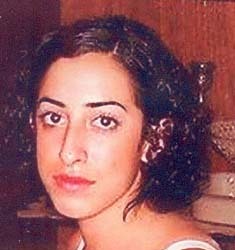
2004: On Sep 29, we lost 2 years old Dorit Massarat Binsan

2003: On Sep 9, we lost 20 years old Naava Appelbom
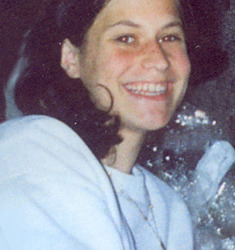
2002: On Nov 10, we lost 4 years old Noam Levi Ochayon
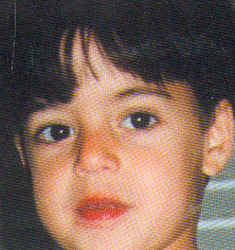
2001: On Dec 12, we lost 42 years old Ester Avraham
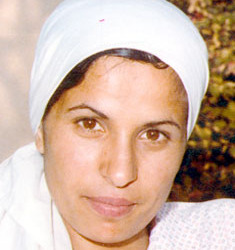
2000: On Nov 21, we lost 19 years old Itamar Yefet
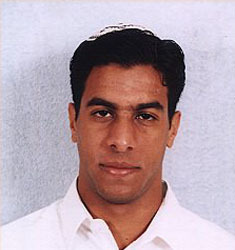
1999: On Jun 24, we lost 34 years old Tony Eliyahu Zanna
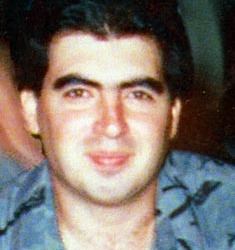
1998: On Dec 2, we lost 41 years old Osama Moussa abu Aisha
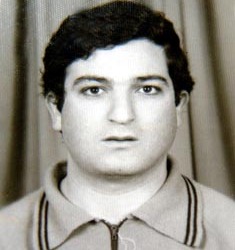
1997: On Mar 13, we lost 13 years old Natali Alkalai
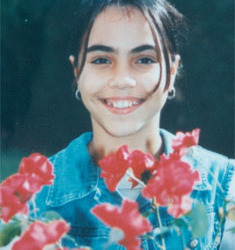
1996: On Feb 25, we lost 57 years old Yitzchak Elbaz
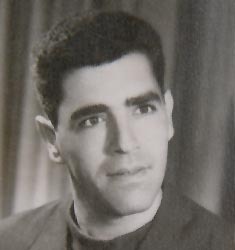
1995: On Jul 24, we lost 60 years old Zehava Oren
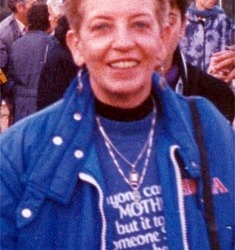
As Tumblr limits a post to 30 images... part 1/5 - the next parts will be posted in the reblogs momentarily. Please check out the full list.
(for all of my updates and ask replies regarding Israel, click here)
#israel#antisemitism#israeli#israel news#israel under attack#israel under fire#terrorism#anti terrorism#hamas#antisemitic#antisemites#jews#jew#judaism#jumblr#frumblr#jewish#israelunderattack
275 notes
·
View notes
Quote
The interview between Dr. Phil and Donald Trump was an interaction between two television characters and symbols. There is no authenticity or truth to the interview-therapy session because it is a staged or “pseudo-event”, a form of propaganda, that is designed to manipulate the viewers by emotionally training and conditioning them into accepting Donald Trump and his neofascist MAGA movement’s return to the White House as both inevitable, normal, and good. [...] As Trump recited his narcissistic script, an audience may have expected a bit more from a clinical psychologist, posing as an interviewer, even though he had been unlicensed since 2008. Mr. McGraw, anointed by Oprah twenty-two years prior, became Dr. Phil and ministered pop psychology to a generation.
Dr. Phil's staged interview with Donald Trump is a sign of the grim political theater to come
Oh wow. “Doctor” Phil hasn’t been licensed since 2008. I mean, I knew the guy was a quack and a fraud, just one or two steps away from being the pillow guy, but I had no idea he shamelessly walks around pretending he’s a real doctor, when he’s actually been unlicensed for 16 years.
389 notes
·
View notes
Photo
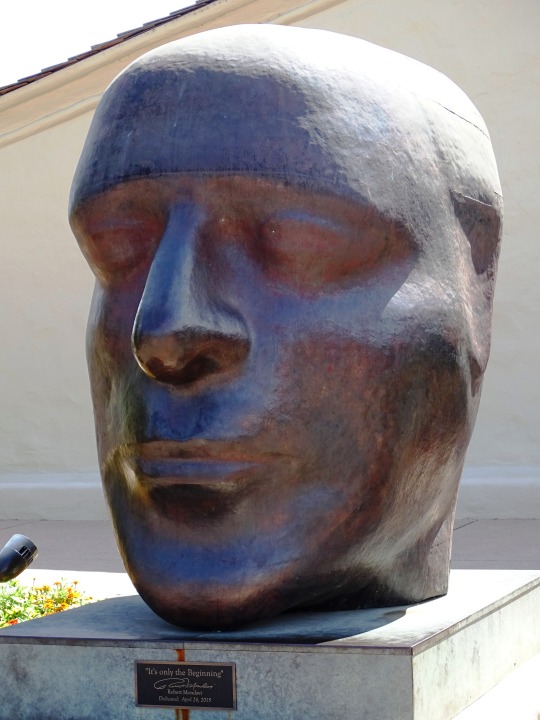






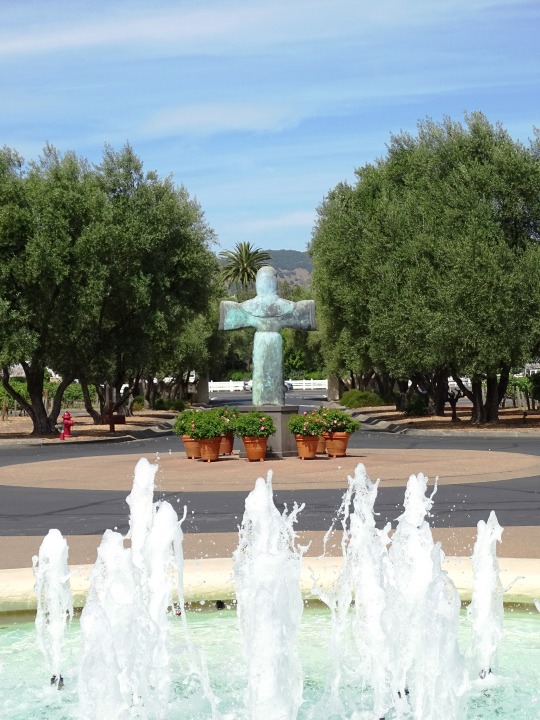
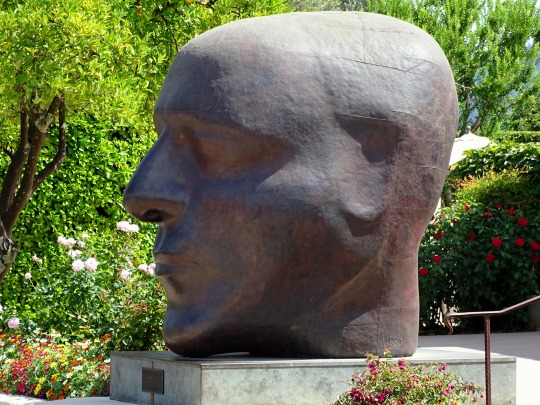
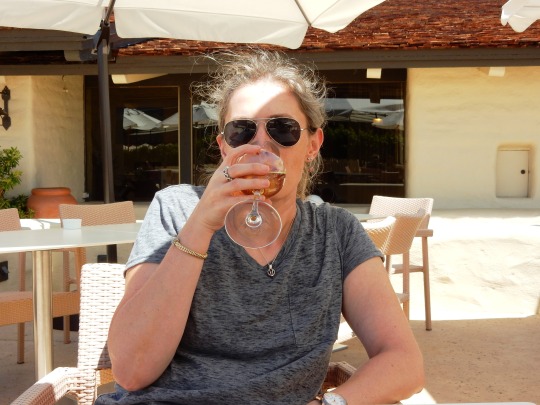
Robert Gerald Mondavi died on May 16, 2008.
#Robert Mondavi Bust By Len Urso#Robert Gerald Mondavi#died#death#16 May 2008#anniversary#US history#tourist attraction#landmark#USA#Oakville#Napa Valley#summer 2019#2017#original photography#travel#outdoors#architecture#cityscape#garden#flora#wine tasting#don't drink and drive#St. Francis of Assisi by Beniamino Bufano#Cliff May#vineyard#West Coast
1 note
·
View note
Text
Maro’s Teaser for Murders at Karlov Manor
Before previews for Murders at Karlov Manor officially begin, I thought it would be fun to do another of my Duelist-style teasers where I give tiny hints of things to come. Note that I’m only giving you partial information.
First up, here are some things you can expect:
• white gets a card that lets you play a subset off the top of the deck
• a new enchantment subtype Case
• a card with four different hybrid symbols in its mana cost
• a popular mechanic returns tweaked with a new name
• a green sorcery that you can have any number of in your deck
• a keyword mechanic not printed in a premier set since 2008 returns on a single card
• a creature that allows you an alternate nonmana cost for all your spells
• some creature tokens in the set: (note that some have abilities) 0/0 green Ooze, 0/0 colorless Thopter (also artifact), 0/1 green Plant, 1/1 black Bat, 1/1 white Dog, 1/1 red Goblin, 1/1 white Human, 1/1 blue Merfolk, 1/1 white and black Spirit, 1/1 colorless Thopter (also artifact), 2/1 black Skeleton, 2/1 black and green Spider, 2/2 white and blue Detective, 2/2 red Imp, and 5/5 green and white Wolf
• And yes, Murder is in the set
Next, here are some rules text that will be showing up on cards:
• “Whenever a creature an opponent controls dies, if its toughness was less than 1, draw a card.”
• “Choose any number of target players.”
• “Creature cards in your graveyard gain ‘You may cast this card from your graveyard’ until end of turn.”
• “Then sacrifice it if it has five or more bloodstain counters on it.”
• “you may search your graveyard, hand, and/or library for a card named Magnifying Glass and/or a card named Thinking Cap and put them onto the battlefield.”
• “target opponent gains control of any number of target permanents you control.”
• “If an ability of a creature you control with power 2 or less triggers, that ability triggers an additional time.”
• “As long as there are no cards in your library,”
• “If one or more tokens would be created under your control, those tokens plus a Clue token are created instead.”
• “Whenever you sacrifice a Clue, target opponent gets two poison counters.”
Here are some creature type lines from the set:
• Creature – Vedalken Artificer Detective
• Creature – Ogre Cleric
• Artifact Creature – Insect Thopter
• Creature – Lammasu
• Creature – Weird Detective
• Creature – Goblin Bard
• Creature – Viashino Assassin
• Artifact Creature – Clue Fish
• Creature – Elf Crocodile Detective
• Legendary Creature – Mole God
Finally, here are some names in the set:
• Airtight Alibi
• Caught Red-Handed
• Deadly Cover-Up
• Eliminate the Impossible
• Homicide Investigator
• Innocent Bystander
• It Doesn’t Add Up
• Person of Interest
• Private Eye
• Scene of the Crime
Follow the story each day this week and tune into the debut at 9:00 am PT on Jan 16 on twitch.tv/magic or youtube.com/@mtg to learn whodunit! Can you solve the mystery before detective extraordinaire Alquist Proft?
407 notes
·
View notes
Text
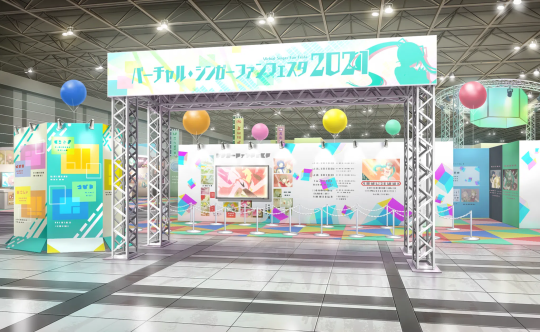

Only one date is ever mentioned in-game, that being 2021. Considering that the Virtual Singer Fan Festa seems to be a stand-in for Magical Mirai 2021, we can assume that the Scramble Fan FESTA! event takes place in September 2021 (the real-life MM2021 was delayed to November due to covid-19, but the pandemic doesn't exist in-universe and MM Tokyo usually takes place at the beginning of September). There are Leo/need Daily Life social media posts that show them attending Magical Mirai, and do state the year of the event, but these can be considered promotional material for the event itself rather than canon material, especially since the characters address in-game that only one year has passed since the start of the story (despite the fact they have celebrated new year's day 4 times now. Timeloop things).
Based on this date, we can actually place exactly when every main character was born. The cutoff date for Japanese schools is April 1st, making Ena the oldest main character, being a 3rd year with a birthday of April 30th, followed by Tsukasa on May 17th, so on so forth all the way down to Kohane, a 2nd year with a birthday of March 2nd.
Considering when Scramble Fan FESTA is set, Ena, who was a 2nd year at the time, would be 17 years old. That would place her date of birth as April 30th, 2004. Additionally, while Kohane, a first year at the time, should be 15 during the event, the game considers her to be 16 due to using a set age for every grade bracket. Regardless, the event setting places her date of birth as March 2nd, 2006.
Based on this, we can conclude that:
Ena, Tsukasa, Rui, and Shizuku were born in 2004
Mafuyu, Kanade, Airi, Minori, Saki, Toya, Nene, An, Ichika, Mizuki, Emu, Haruka, Honami, and Akito were born in 2005
Shiho and Kohane were born in 2006
This also means that Ena, Tsukasa and Rui are all older than the MEIKO software (released November 5th 2004), and everyone except Kohane is older than the KAITO software (released February 17th 2006). Every main character is older than Miku, the Kagamines, and Luka based on this information.
Using the information around set ages*, we can also work out rough estimates for when the side characters were born. For example, Arata, who was 19 during the first 3 years of the game, is 3 years older than the members of VBS who were all considered to be 16. Since the members of VBS were born in the April 2005 - April 2006 school year range, Arata was likely born in the 2002-2003 school year range.
* based on how characters like Youta and Miu, who are said to be the same age as Leo/need, were both confirmed to be 16 years old before the 3rd anniversary age-up. Also Haruka's age is confirmed as 16 at a point in time when she shouldn't be 16. Timeloop things.
Based on this, the oldest living side character, Kounosuke, who was 55 pre-3rd anniversary and 39 years older than Emu, was probably born between April 1966 and April 1st 1967. On the younger side of things, Hanano, who was 14 pre-3rd anni, was likely born between April of 2007 and 2008. I've put the rest of the estimated side character DOBs under the cut.
assumed age as of 3rd anniversary in brackets (literally just pre-age-up age + 1)
Rakunosuke Otori - April 2nd 1922 ~ April 1st 1923 (98 (at time of death. would be 100 if still alive))
Kounosuke Otori - April 2nd 1966 ~ April 1st 1967 (56)
Jean Riley - 1967~1968 (55)
Harumichi Aoyagi - 1968~1969 (54)
Shin'ei Shinonome - 1973~1974 (49)
Mr Yoisaki - 1975~1976 (47)
Ken Shiraishi - 1978~1979 (44)
Taiga Kotaki - 1978~1979 (44)
Mrs Asahina - 1980~1981 (42)
Yoshiki Shindou - 1982~1983 (40)
Yuuka Kazamatsuri - 1990~1991 (32)
Keisuke Otori - 1991~1992 (31)
Shousuke Otori - 1994~1995 (28)
Daigo Kijima - 1994~1995 (28)
Tatsuya Okazaki - 1999~2000 (23)
Yuuki Akiyama - 1999~2000 (23)
Ayaka Saito - 2001~2002 (21)
Hinata Otori - 2001~2002 (21)
Iori - 2002~2003 (20)
Mio - 2002~2003 (20)
Arata Tono - 2002~2003 (20)
Souma Miyata - 2002~2003 (20)
Asahi Genbu - 2003~2004 (19)
Kotaro Mita - 2004~2005 (18)
Sakurako Seiryuin - 2004~2005 (18)
Nanami "Nanamin" Hayakawa - 2004~2005 (18)
Futaba Natsuno - 2004~2005 (18)
Arisa Higure - 2004~2005 (18)
Ayumi Tabata - 2004~2005 (18)
Hibiki Miyake - 2004~2005 (18)
Shuuta Hayashi - 2004~2005 (18)
Ibuki Taniyama - 2004~2005 (18)
Yuina Uchiyama - 2005~2006 (17)
Shouta Hayashi - 2005~2006 (17)
Miu Takagi - 2005~2006 (17)
Youta Yoshizaki - 2005~2006 (17)
Riho Hasegawa - 2005~2006 (17)
Saku Kousaka - 2005~2006 (17)
Mai - 2006~2007 (16)
Hanano Yoshizaki - 2007~2008 (15)
Additional notes (mod is rambling atp):
Rakunosuke died when he was 98 years old. In the WxS main story, Emu says that he died a year ago. Assuming Emu was 15 at the time, they have an age gap of around 83 years. The year of birth listed here was based on that assumption.
We know that Kanade's mother died aged 30, but we do not know when she died. She is still alive in flashbacks set roughly 10 years prior to the events of game.
In the third fanbook, ages were given for Mrs Asahina, Shindou, Yuuki, Asahi, and Arisa as one year less than they are given in this post. The reason for me adding a year on is because of the confirmation in a livestream of Daigo's age being 27. Daigo is meant to be the same age as Shousuke, whose age was given as 27 prior to the 3rd anniversary. When his age was provided on stream, he was grouped with the 5 I mentioned earlier. Based on this we can assume that all their ages are taken from the same time frame, i.e, pre-3rd anni (and this also confirms that NPCs inexplicably don't age but we'll ignore that for continuity reasons).
We do not have confirmed ages for Nagi, Reki, Sakaki, Ohara, MMJ's landlady, Mafuyu's father, Hiiragi, or the members of ReLight yet
Rui suggests that Reki is the same age as him in A Story Where You Are The Star while talking about both him and Asahi in the same sentence. Asahi was since confirmed as 18/19, so it is likely that Reki is also around that age.
Nagi's age is left blank in the fanbook due to it not being revealed that she was dead at the time of publication. She is younger than Taiga, but we don't know by how much, but nonetheless she was likely born in the early 1980s. It is unlikely we will ever know her exact age.
Ohara is stated to be in his mid-30s, placing his birth year as somewhere in the 1980s, likely around 1986-1989. Sakaki is an old college friend of Ohara's, so he is likely a similar age.
No NPCs are given exact birthdays
#this post is an apology for the fact i never made a timeline when i said i would. sorry this is kinda confusing also#in short just know that we can assume that the game takes place in the 2021/2022 and 2022/2023 school years#don't use that as an excuse to be weird about the characters bc that's still the in-universe year(s) even if it's not the irl year.#this post is just for fun okay? okay.#project sekai#lore
498 notes
·
View notes
Text
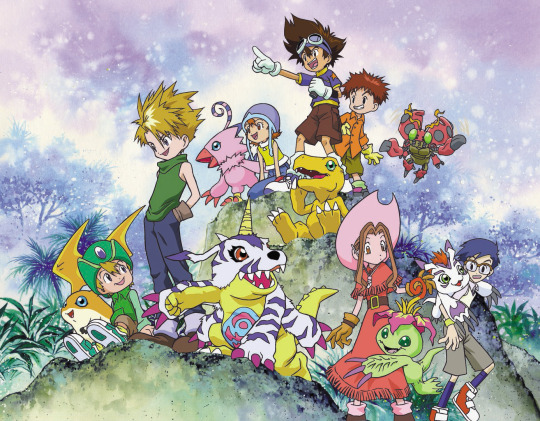

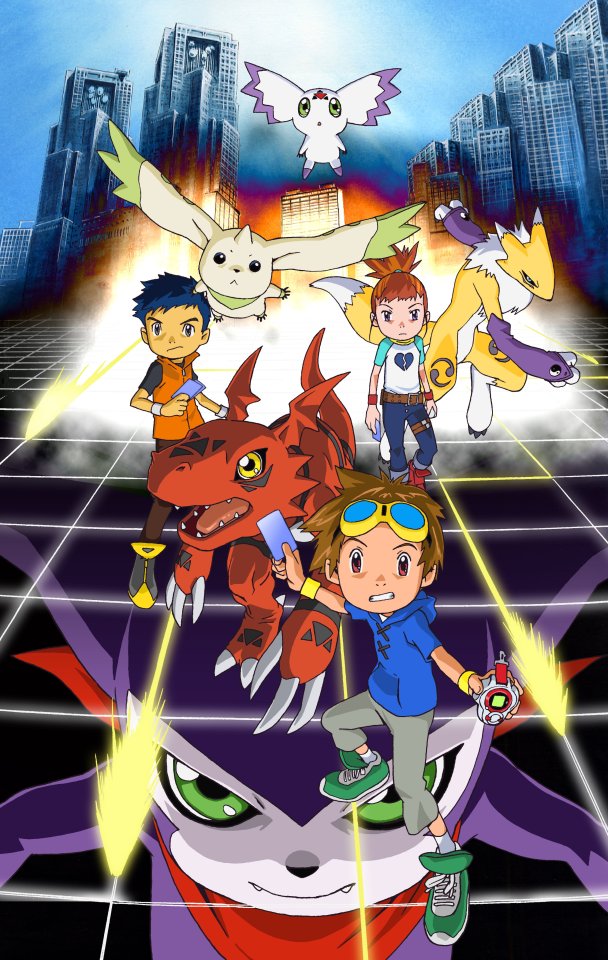
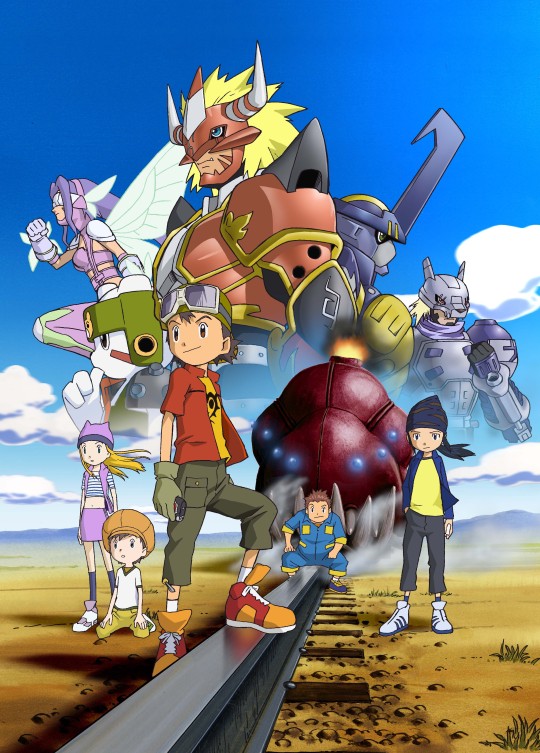
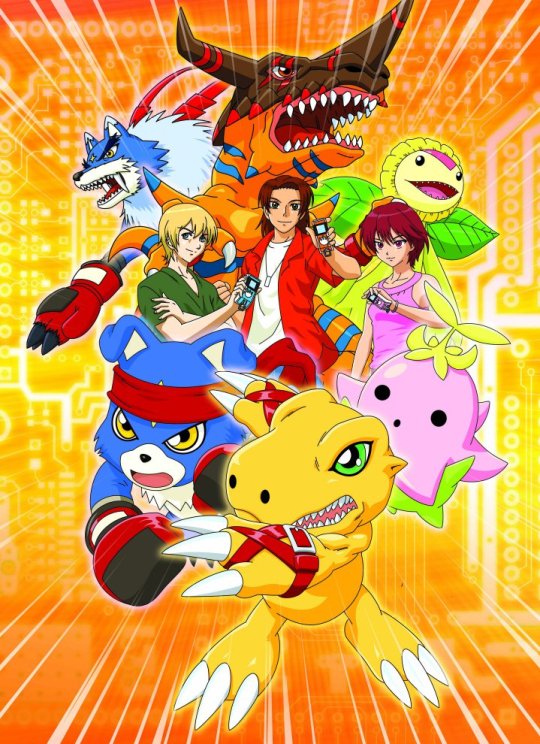


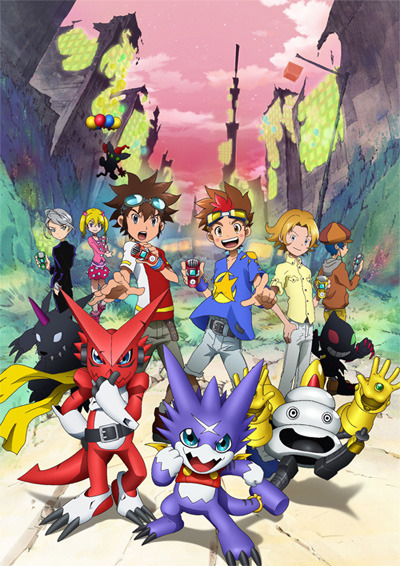
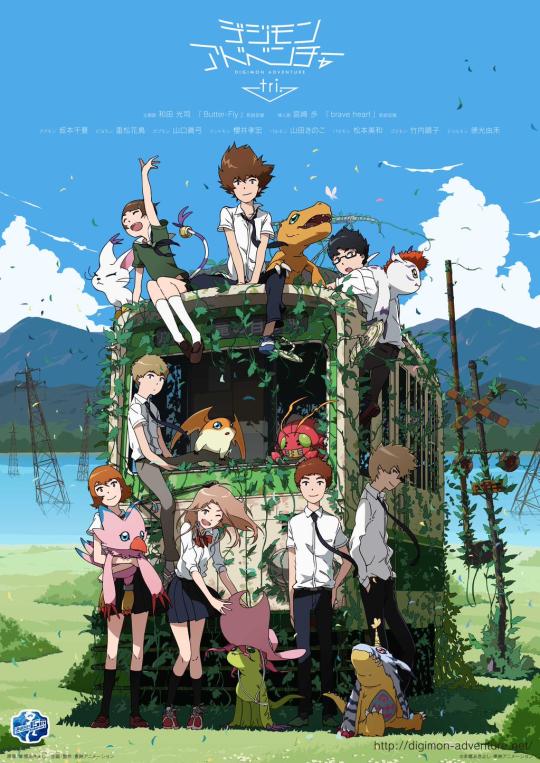
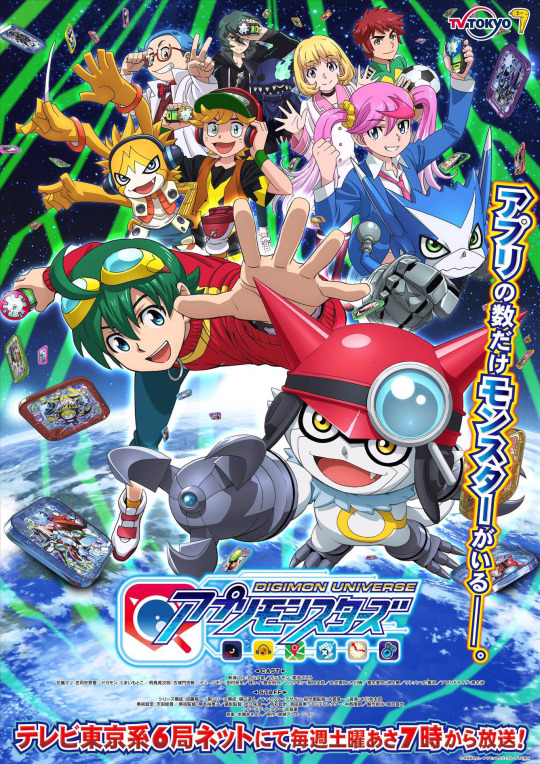
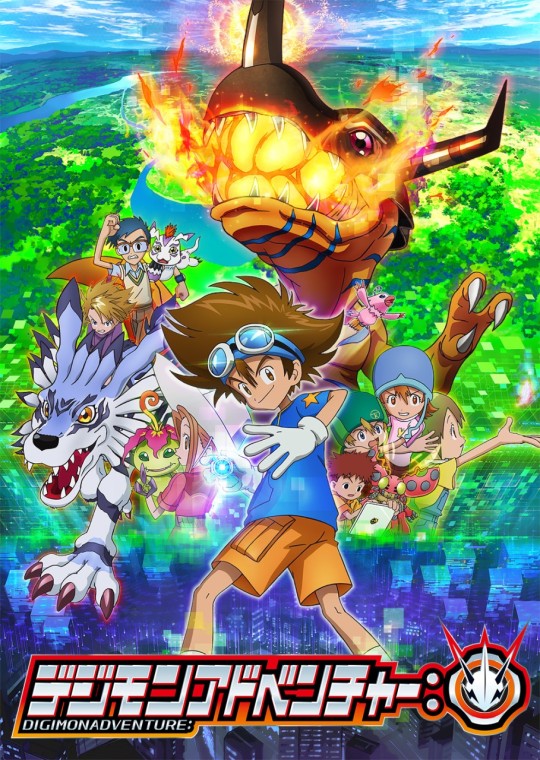
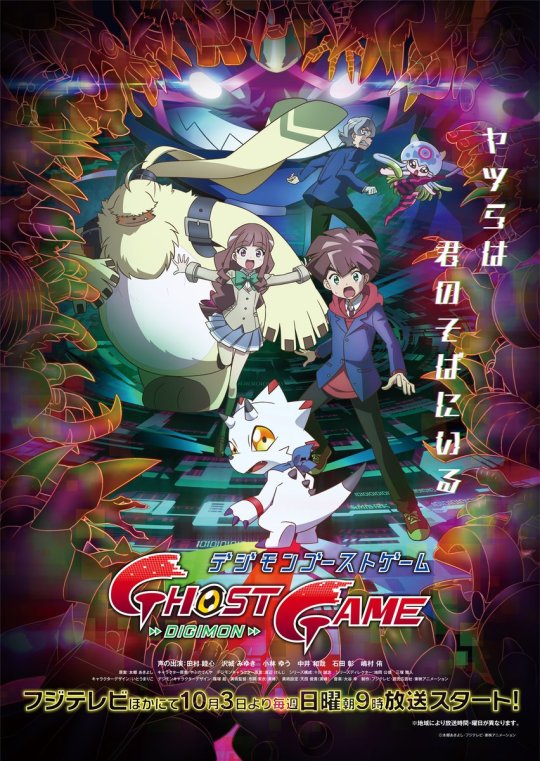


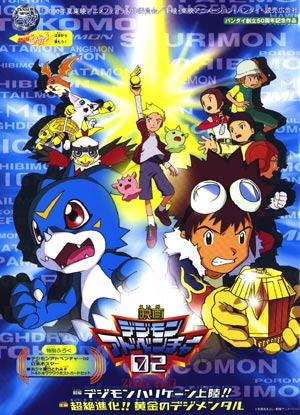






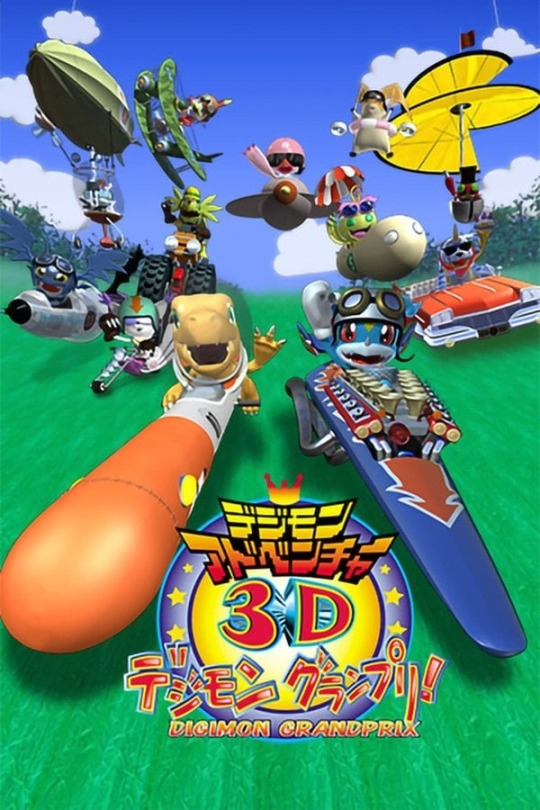
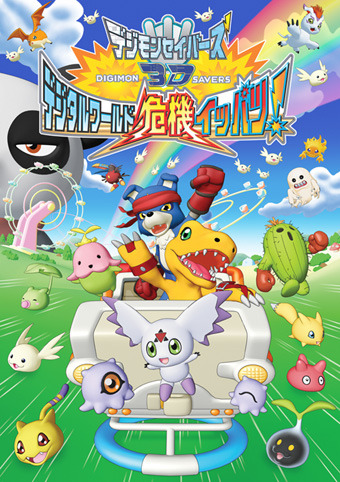
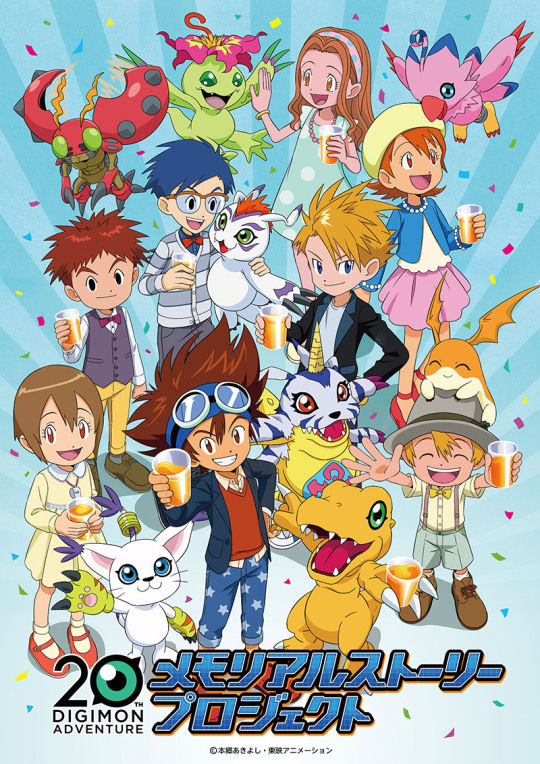

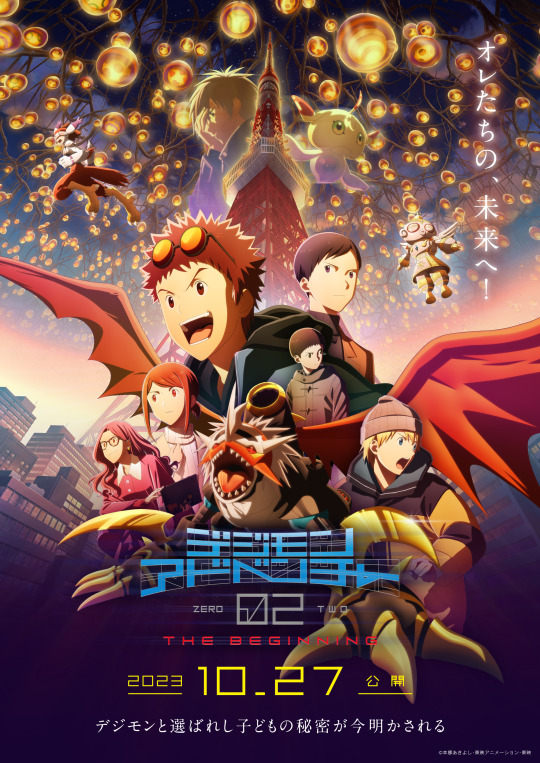
Digimon in all animated media - Anime, Movies and OVA
1st pic = Digimon Adventure anime (Japan: March 7, 1999 - March 26, 2000; USA: August 14, 1999 - June 24, 2000)
2nd pic = Digimon Adenture 02 anime (Japan: April 2, 2000 - March 25, 2001; USA: August 19, 2000 - May 19, 2001)
3rd pic = Digimon Tamers anime (Japan: April 1, 2001 - March 31, 2002; USA: September 1, 2001 - June 8, 2002)
4th pic = Digimon Frontier anime (Japan: April 7, 2002 - March 30, 2003; USA: September 9, 2002 - July 14, 2003)
5th pic = Digimon Savers / Data Squad anime (Japan: April 2, 2006 – March 25, 2007; USA: October 1, 2007 - November 2, 2008)
6th pic = Digimon Xros Wars / Fusion anime (Japan: July 6, 2010 - March 25, 2012; USA: September 7, 2013 - August 16, 2015)
7th pic = Digimon Xros Wars: The Evil Death Generals and the Seven Kingdoms anime (a.k.a Digimon Xros Wars part 2) (Japan: April 3, 2011 - September 25, 2011; USA: March 8, 2015 - August 16, 2015) **
8th pic = Digimon Xros Wars: The Young Hunters Who Leapt Through Time anime (a.k.a Digimon Xros Wars Hunters or Digimon Xros Wars part 3) (Japan: October 2, 2011 - March 25, 2012) ***
9th pic = Digimon Adventure Tri OVA (Japan: November 21, 2015 - May 5, 2018; USA: September 15, 2016 - September 20, 2018)
10th pic = Digimon Universe Appli Monsters anime (a.k.a Appmon) (Japan: October 1, 2016 - September 30, 2017)
11th pic = Digimon Adventure: (a.k.a Digimon Adventure 2020 or Digimon Adventure reboot) (Japan: April 5, 2020 - September 26, 2021; USA: November 19, 2022 - April 13, 2023)
12th pic = Digimon Ghost Game (Japan: October 3, 2021 - March 26, 2023)
13th pic = Digimon Adventure (Movie) short film (Japan: March 6, 1999; USA: October 6, 2000 as the first segment part of Digimon The Movie)
14th pic = Digimon Adventure: Our War Game! movie (Japan: March 4, 2000; USA: October 6 2000 as the second segment part of Digimon The Movie)
15th pic = Digimon Adventure 02: Vol. 1: Digimon Hurricane Landing!/Vol. 2: Transcendent Evolution! The Golden Digimentals movie (a.k.a Digimon Adventure 02 Vol 1 and 2) (Japan: July 8, 2000; USA: October 6, 2000 as the third segment part of Digimon The Movie) ****
16th pic = Digimon Adventure 02: Diablomon Strikes Back / Digimon: Revenge of Diaboromon movie (Japan: March 3, 2001; USA: August 5, 2005)
17th pic = Digimon Tamers: The Adventurers' Battle / Digimon: Battle of Adventurers movie (Japan: July 14, 2001; USA: October 16, 2005)
18th pic = Digimon Tamers: The Runaway Digimon Express / Digimon: Runaway Locomon movie (Japan: March 2, 2002; USA: October 2, 2005)
19th pic = Digimon Frontier: Revival of the Ancient Digimon!! / Digimon: Island of Lost Digimon movie (Japan: July 20, 2002; USA: October 23, 2005)
20th pic = Digital Monster X-evolution movie (Japan: January 3, 2005; USA: August 1, 2020)
21st pic = Digimon Savers The Movie: Ultimate Power! Activate Burst Mode!! movie (Japan: December 9, 2006)
22nd pic = Digimon Adventure 3D: Digimon Grandprix! short film OVA (Japan: July 20, 2000)
23rd pic = Digimon Savers 3D: The Digital World in Imminent Danger! short film OVA (Japan: July 8, 2006)
24th pic = Digimon Adventure 20th Anniversary Memorial Story Project OVA short films (Japan: November 22 2019 - December 25, 2020)
25th pic = Digimon Adventure: Last Evolution Kizuna movie (Japan: February 21, 2020; USA: September 29, 2020)
26th pic = Digimon Adventure 02: The Beginning movie (Japan: October 5, 2023; USA: November 8, 2023)
** This is the 2nd part of Digimon Xros Wars saga with Taiki, Kiriha and Nene on their adventure while Akari and Zenjirou are left out.
*** This is the 3rd part of Digimon Xros Wars saga with Tagiru, Yuu and Taiki as the protagonists. This 3rd part has the overly long title so we fans prefer to call it 'Digimon Xros Wars: Hunters' or 'Digimon Young Hunters'.
**** Yes, this movie has an overly long title. I had a hard time deciding whether to highlight it in bold or not.
Happy Digimon Day!
#Digimon#Digimon Adventure#Digimon Adventure 02#Digimon Tamers#Digimon Frontier#Digimon Savers#digimon data squad#Digimon Xros Wars#digimon fusion#Digimon Ghost Game#Appmon#digimon adventure 2020#picspam#digimon day#odaiba day#odaiba memorial day
153 notes
·
View notes
Text
Spencer Reid A-Z Masterlist
these are written as a story with each letter being a new chapter. I recommend reading in chronological order for story purposes, but these could also work as one shots.
unless explicitly stated, all my fics ignore anything related to jeid, and in my universe, maeve simply does not exist. i do like the idea that spencer and ethan may have had a romance in college
the following events are removed from canon: anything related to a jeid romance, maeve (i just can't have reader and spencer break up for her character to have her moment)
the following events are what i believe to have happened before this timeline began: spencer and ethan had a small (non-sexual) romance in college which is the real reason why they hadn't spoken in years, spencer is a virgin, lila archer events did occur, however i do not believe he had real feelings for her, he was just doing his job (i do think he enjoyed the kiss though, because who wouldn't)
I’ve put them in a timeline and they are further categorized by emojis
Have recommendations? Visit my Spencer Reid A-Z Recommendations to submit your ideas!
key:
🧸- fluff
🔥- smut
❤️🩹- angst
🕰️- coming soon
2008
january
03: you join the BAU (age 24)
july
07: a is for About Time 🧸
23: b is for Boy Genius? 🧸
august
09: c is for Case by Case 🧸
25: d is for Diana🧸
september
12: e is for Even Guys Like Me? 🧸❤️🩹
15: f is for First Date 🧸
october
03: g is for Girlfriend 🧸
12: Spencer’s 27th Birthday
31: h is for Hold my Hand 🧸
november
07: i is for I knew it! 🧸
12: Henry LaMontagne is born
17: j is for Just So You Know… 🧸
december
05: k is for Kissing Isn’t Enough 🔥
14: l is for Lover Boy 🧸
22: m is for Merry Christmas 🧸
2009
january
01: n is for New Years 🕰️
26: o is for🕰️
february
02: p is for Pretty Boy 🕰️
11: jj returns from maternity leave
18: q is for Quiet 🕰️
march
09: r is for Reid? 🕰️
26: s is for Sitter 🕰️
april
10: t is for Two Time 🕰️
19: u is for
may
07: v is for
26: w is for
june
5: x is for
29: y is for
july
16: z is for
#spencer reid#spencer reid fluff#spencer reid x y/n#spencer reid x fem!reader#spencer reid x reader#spencer reid imagine#spencer reid fanfiction#spencer reid x bau!reader#spencer reid x you#spencer reid fic#criminal minds#criminal minds fanfiction#criminal minds x reader#spencer reid smut#spencer reid x y/n smut#spencer x reader#criminal minds fanfic#criminal minds smut#spencereidluver#spencer reid a-z
687 notes
·
View notes
Text
Trump probably can't win the presidential election without North Carolina. 🤔💡
It would be difficult though not out of the question for Kamala Harris to win without Pennsylvania. But it would be close to impossible for Donald Trump to win without taking North Carolina.
If Trump loses North Carolina, it could be an early night — and curtains for GOP
Democrats hope that momentum determines the presidential winner and even changes the contours of election night. North Carolina polls close early, at 7:30 p.m. Moreover, state law allows processing of mail-in votes well before Election Day, making an early count possible. (Some states, including Pennsylvania and Wisconsin, cannot start processing until Election Day, which could result in delays of several days before a winner is determined.) Should Harris win North Carolina’s 16 electoral votes, Trump’s chances of victory diminish greatly. He would need a virtual sweep of other battleground states (and likely all of the blue-wall states).
A quick reminder that North Carolina was the state which gave Trump his narrowest victory in 2020. It was won in 2008 by Barack Obama. So we're not exactly talking Tennessee or Idaho here.
An early-evening victory in a state Democrats have not won for 16 years would reverberate through the country, potentially depressing GOP turnout in Western states and diminishing the appetite for stunts to refuse certification of results in states such as Arizona and Georgia (which would not be determinative if Harris holds the blue wall and wins North Carolina).
Republicans are more likely to vote on Election Day than Democrats who have adopted early voting in greater numbers than Republicans. So an early call for Harris-Walz in North Carolina on the night of the election would more likely depress Republican votes in the Western US.
One thing which may negatively affect Trump in the state is the awful Republican candidate for governor of North Carolina.
[T]he North Carolina governor’s race might have a “reverse coattails” effect. The Republican nominee, Lt. Gov. Mark Robinson, is an extremist conspiracy nut, a “fount of social media conspiracy theories and vile proclamations about the LGBT community, Jews, and other minority group,” the Daily Beast noted this year. From Holocaust denial to thundering that “some folks need killing” to his support for an abortion ban from “zero weeks,” he symbolizes everything wrong with today’s MAGA Republican Party. Robinson’s Democratic opponent, Josh Stein, the state attorney general, has opened a 10-point lead. If Democrats tie Robinson (a Trump favorite) to Trump, voters might run from both. At the very least, Republicans could suffer a drop in turnout as disgusted North Carolinians simply stay home.
A better than average turnout of Dems in NC would help flip the state. If you live just over the border in deep red South Carolina or Tennessee then consider doing some volunteer work in North Carolina. It could have an impact which extends far beyond the Tar Heel State.
#north carolina#donald trump#weird donald#republicans#maga#mark robinson#election night#kamala harris#election 2024#vote blue no matter who
117 notes
·
View notes
Text

Moulin Rouge Hotel & Casino
May 1955, opening week. Photo by Loomis Dean.
Timeline, in progress ...
‘54: Las Vegas City Commission approves construction of Moulin Rouge on 3/29/54. Groundbreaking on 7/16/54.
‘55: Opened 5/24/55. Closed 10/10/55 following legal action taken by unions; MR files petition for bankruptcy on 10/19/55.
‘56: Bankruptcy sale, Nov. 27. Lone bid of $470,000 rejected.
‘58: Leo Frey (Leroy Co.) awarded the hotel by court. Frey, “a sizeable investor in the original corporation which owned the hotel and the partnership which operated it” (RJ 11/25/58). Frey denied gaming license, reopens hotel and coffee shop. Other individuals later denied gaming license “because of unsuitable backgrounds of the landlords Leo, Herbert, and Karl Frey” (RJ 3/21/69).
‘85: Joe & Sarann Preddy, Joe Walker lease Club Rouge and the bar. Takes over ownership from Leroy Co. c. 1990, secures liquor and gaming license.
‘92: Moulin Rouge listed on National Register of Historic Places.
‘97: Sold to Bart Maybie.
‘03: Fire destroys much of the property.
‘04: Moulin Rouge Development Corp. buys property; bankruptcy in 2008.
‘09: Olympic Coast Investment takes ownership; another fire; sign donated and moved to Neon Museum; tower demolished in 2010.
‘12: OCI files bankruptcy.
‘17: Fire; last remains of MR and Montemartre Motel demolished.
Photos of Moulin Rouge
“City Threatens Moulin Rouge License Over Ownership Fuss.” Review-Journal, 10/5/55; “Moulin Rouge Re-Financing Sought After Casino is Closed.” Review-Journal, 10/11/55; “No Action Against Spa Licenses.” Review-Journal, 10/20/55; “Couple trades parcel of land to get Moulin Rouge Hotel.” Review Journal, 1/26/90; Earnest N. Bracey. Winter ‘96. The Moulin Rouge Mystique: Blacks and Equal Rights in Las Vegas, Nevada Historical Society Quarterly, Vol. 39, No. 4, p. 272-288; Nicole Raz. “Light Touch Needed.” Review Journal, 8/7/2016.
84 notes
·
View notes